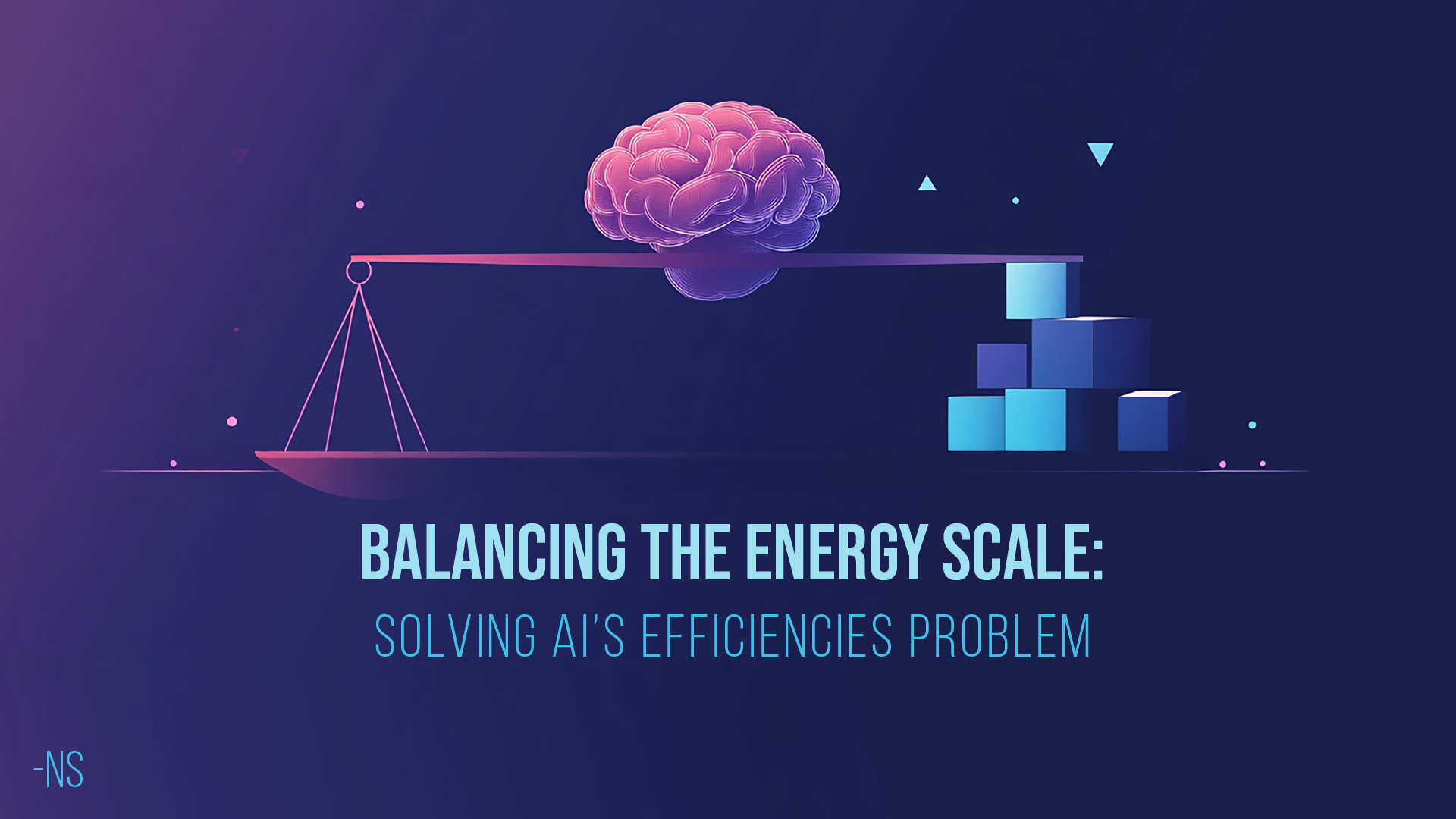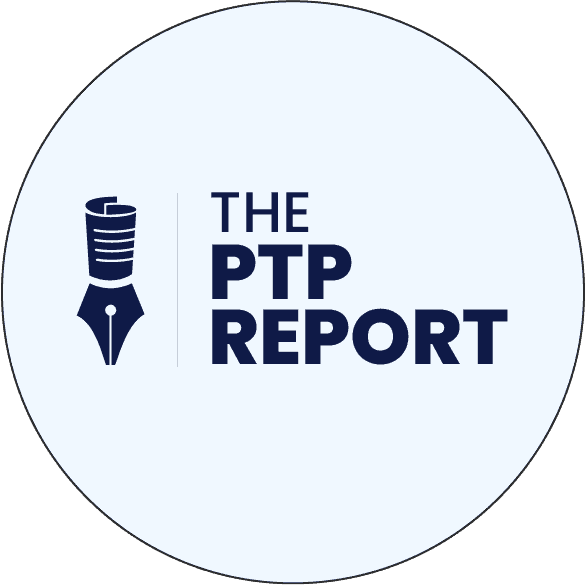AI today is truly a paradox.
On one hand it can generate trillions of dollars of value across business use cases (McKinsey in January estimated the AI opportunity at $4.4 trillion in added productivity).
On the other it’s a resource hog.
For every workflow AI is streamlining or mindless task it’s automating, it is devouring exponentially more power. This is power needed for training (and retraining), and also for execution.
AI is also scaling faster than any technology in history, making it no surprise that US power consumption will hit record highs in 2025 and 2026, according to updates this week from the US Energy Information Administration.
Still, there are many reasons not to panic yet. Historical context is one. Innovation is another.
Many experts are predicting AI will not only offset its own power demands but even exceed them, but can these outlooks be trusted?
In today’s newsletter, I consider AI energy problems and solutions.
So Just How Much Energy Does AI Use?
The article AI Needs to Be More Energy-Efficient from the March Scientific American gives a good grounding in the AI energy efficiency problems we’re dealing with.
As generative solutions are increasingly (and successfully, based on recent earnings) rolled into search by companies like Google, OpenAI, and Perplexity, and used to underpin services and chat functionality at Meta, Microsoft, and Amazon (and via all SaaS of scale), power is being consumed in two stages.
- Training: Models are trained on enormous volumes of data, and this is costly. As an example, one prior OpenAI model used enough energy to power 120 average US homes for an entire year. And each upgrade means retraining. Note that while DeepSeek’s training was far more energy efficient using some techniques below, the actual costs and efficiency numbers are still being interrogated.
- Query: To give you the answer you need, AI then works through all this information using inference, and this process is also energy intensive. While I hear varying quotes on how much power it uses, most seem to agree that generative AI searches demand at least 10 times more power than traditional search engine queries. Image generation, unsurprisingly, is worse. And again, while the rate varies, generating a single image takes as much power as would charge an average smartphone from empty to 50%.
All this power use has an environmental impact to consider, and it also has a financial one.
An example from the Scientific American article on Google AI energy use: If they use generative AI for just half the queries they receive (at 50 words of text in output), it will cost them $6 billion in power.
Another example: Sam Altman has joked that using “please” and “thank you” alone in prompts has cost the company tens of millions of dollars a year, per reporting by The New York Times.
Data centers are increasingly demanding more power (using 3% of the world’s energy currently), but former Google CEO Eric Schmidt’s AI power prediction to Congress raised eyebrows when he suggested this need could reasonably explode to 99% of currently generated power levels.
Ultimately, many fear the cost of this spiking demand will be passed on to all of us, in the form of increased power bills.
Nuclear power is one solution being thrown at this problem. Argentina, for example, is in the news as they aim to become a hub for the kinds of smaller, modular reactors (SMR) that are being targeted for AI data center needs. Their plan is to create these SMRs and sell stakes to companies in need.
But such power sources bring their own concerns.
The AI Energy Crisis 2025 in Historical Context
This sounds like a steep hill to climb.
But before we panic, there is actually historical precedent, in the form of prior technological breakthroughs.
Emily Waltz, in an April article for the IEEE Spectrum, looks at AI and electricity demands, now against the explosion of electrical appliances and industrial boom in the postwar US of the 1950s.
At that time, rural stretches of the country were going through a shocking technological makeover, with power needs growing by some 9% a year on average (the peak year, 1955, saw a 16% spike in power needs).
This increased demand continued into the 1960s with air conditioners and more industrial draws, but manufacturing processes and appliances both became far more efficient over time, seeing demands drop into the 1980s (where some years saw surplus) before the computing age in the 2000s, with computing and internet renewing concerns.
Current electrical growth needs are estimated from 3–6% a year to accommodate AI. And while we’re starting from a much higher baseline, with this gain much harder to deliver safely, history shows that it may not be naive or excessively optimistic to believe it can be done.
Most intriguing to me is how much innovation has played a role in bringing down these numbers, historically.
Let’s consider some ways this may happen again.
Actionable Solutions to Reduce AI Power Usage
We’re already seeing AI energy efficiency breakthroughs in a variety of areas, some more experimental than others. (In my prior article linked above I considered DNA storage, for example, which is remarkable but not as ready to scale as solutions covered below.)
Here are some of the most immediate ways we’re seeing AI energy demands being tamed:
1. Smarter AI Energy Consumption: Smaller Models in Tandem
DeepSeek’s gains were most strongly realized here. Their Mixture-of-Experts (MoE) approach made use of many smaller models working under larger, oversight models, as opposed to a single, massive LLM doing everything.
These smaller, task-specific models are far more efficient, and while they trade off on parameters and breadth of capacity (vs multi-dimensional monoliths), they can be stacked or work together to potentially achieve just as much and with a far lower power draw.
(See my prior article on the data center build-out for more on DeepSeek’s innovations.)
German researchers at Saarland University and the German Research Center for Artificial Intelligence (DFKI) are using this same approach, with “student” models working under a much larger “teacher” model, to attain a stunning 90% reduction in power use without discernable reduction in capacity.
These smaller models are also far more cost effective.
2. Improving AI Hardware Efficiency: Memory Optimization and Direct Liquid Cooling
While it works to use the biggest and best GPU for your every AI ask, it’s not the best route to sustainability.
Researchers, like those on Murali Annavaram’s team at USC, are analyzing the benefits in rethinking one’s compute distribution. With the aim of cutting both costs and power consumption without losing performance, they’re shifting to CPUs for memory storage and preprocessing, while reserving power-hungry GPUs for active processing.
Optimization everywhere can pick up a lot of slack.
In the area of memory, Stanford Engineer and TSMCs former VP of Research H.-S. Philip Wong has seen a use-case–driven mix of memory technologies (vs a similar one-for-all view) bring 9x efficiency gains to AI workloads. Again, this involves using an additional layer to pick and choose from options that best suit needs.
The materials used in chip building can also bring about enormous energy savings, as can innovations like Nvidia’s direct-to-chip liquid cooling approach. While the company’s newest chip systems demand far more power for each performance upgrade, cooling improvements are one way they can cut back on this increase and potentially even see decreases in the energy required.
Traditionally, large volumes of water, either directly circulated or used to chill air, move through a data center to cool it. This alternative continuously circulates coolant without evaporation and, per the Nvidia, is proving 25 times more energy efficient and 300 times more efficient in water use.
3.Direct Leveraging of the Beneficial Energy Impact of Artificial Intelligence
When it’s all said and done, it may be AI itself that lessens the AI environmental impact.
Through improved analytics, AI can improve data center performance itself, by making smarter seasonal and day/night cycle adjustments, for example.
Load controlling is another way that AI can decrease its own footprint. By running heavier tasks when a power grid has surplus, or by taking advantage of time zones to pair AI and renewable energy source availability, AI can decrease its own footprint.
AI is also providing these benefits in other areas, such as through smart buildings (improved HVAC use and lighting control) and via optimized logistics which can cut fuel use on the ground, at sea, and in the air.
PwC Germany, Microsoft, and Oxford University are using similar solutions to pre-cool rooms before they get overheated, for example, and to make smarter cement with a far less energy intensive process.
Models from PwC have estimated that if AI can improve energy use across industries (not just for itself) at one-tenth the rate of adoption, it can actually match or exceed its own power demands.
That is, make AI truly net-zero as a technology.
Conclusion: Reaching the Goal of Sustainable AI
Can AI reduce energy consumption?
Absolutely yes. As I led with, this is the paradox, because AI solutions are already leading efficiency breakthroughs across the world.
But the critical question is if it can do enough to offset its own ravenous hunger for power.
With effective use of smaller models, AI systems are rapidly becoming more efficient and affordable for smaller and medium-sized businesses, which is great news for everyone.
At PTP, we work with AI every day, and provide the very best in AI/ML experts to companies in need. In these ways, I’m seeing the impact of these improved efficiencies every month.
But the question in my mind remains about frontier research.
In the quest to reach AGI first, limits aren’t being found yet, which means more power and more scale bring better results. At the leading edge, there may be no waiting for grids to catch up. Here it is speed that is of the utmost importance.
For the rest of us, it may all be a question of scale.
References
AI Needs to Be More Energy-Efficient, Scientific American
US power use to reach record highs in 2025 and 2026, EIA says, Reuters
Saying ‘Thank You’ to ChatGPT Is Costly. But Maybe It’s Worth the Price., The New York Times
This Chart Might Keep You From Worrying About AI’s Energy Use and Can Remixing Memory Curb AI’s Energy Problem?, IEEE Spectrum
Nvidia’s liquid-cooled AI racks promise 25x energy and 300x water efficiency, TechSpot
Could net-zero AI become a reality?, PwC
Researchers Cut AI Energy Use by 90% with Smarter, Leaner Models, AzoAI
How Can Computing for AI and Other Demands Be More Energy Efficient?, USC Viterbi School of Engineering
Superagency in the workplace: Empowering people to unlock AI’s full potential, McKinsey





